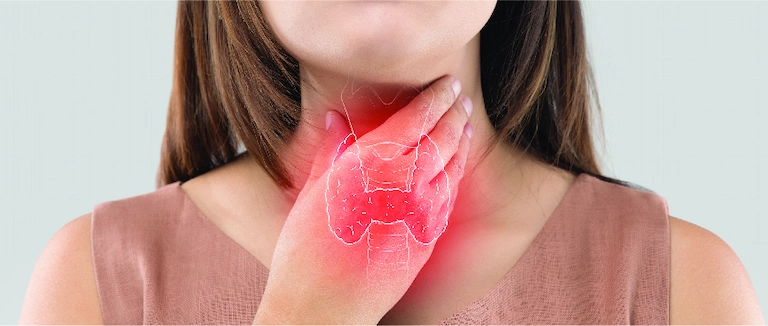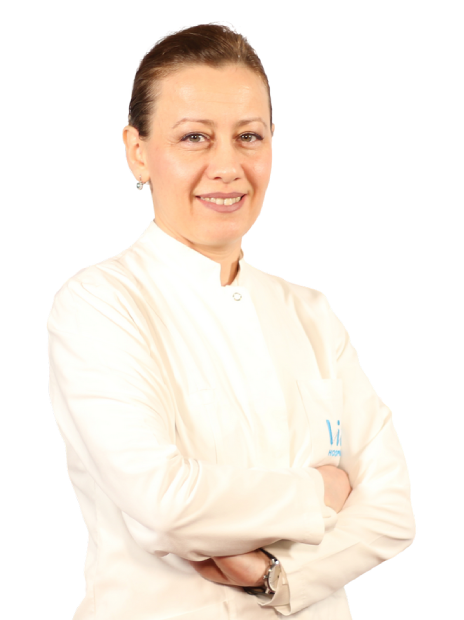Today, radionuclide therapy is regarded as one of the most advanced methods in cancer treatment. When radioactive agents are administered with precision and purpose, they can significantly improve the treatment outcomes for certain diseases and enhance patients' quality of life. The main goal of radionuclide therapy is to target cancerous tissues directly while protecting healthy tissues. Compared to other treatments, its side effects are generally fewer and milder. Moreover, after the treatment is given, imaging technologies can show where in the body the radionuclides have accumulated and how effective the therapy has been. Liv Hospital Nuclear Medicine Specialist Assoc. Prof. Dr. Emel Ceylan Günay shares insights into radioiodine treatment in this guide.

What is atomic therapy?
Radioiodine therapy, commonly known as atomic therapy, uses radioactive iodine-131 to treat certain conditions. The beta rays from iodine-131 target diseased tissue, while the longer-range gamma rays make it possible to create diagnostic images. Atomic therapy is given orally, either as a capsule or a liquid. The liquid form is tasteless and easy for patients to swallow.
Who can receive the treatment?
Atom therapy is used to treat conditions such as hyperthyroidism”where the thyroid gland is overactive”and thyroid cancers. Low doses are given for hyperthyroidism, while higher doses are reserved for thyroid cancer. This treatment is not recommended for pregnant or breastfeeding patients. Otherwise, it can be safely administered to individuals of any age or gender and repeated if needed. Usually, a single well-calculated dose is sufficient, but in some cases”especially if the disease is resistant or widespread”multiple treatments may be necessary.
Are there any side effects of atom therapy?
Atom therapy may cause some minor side effects. Occasionally, patients may experience temporary pain or tenderness in the neck and, in some cases, swelling of the salivary glands. Nausea can also occur shortly after treatment, especially in those with existing stomach issues. Fortunately, these effects can often be prevented or minimized by following simple recommendations from your doctor.
After atom therapy, it is possible for patients to become pregnant, give birth, and breastfeed. However, it is advised to wait at least six months after treatment before attempting to become pregnant.
What is the process after atomic therapy?
If the dose given requires hospitalization, patients are cared for in specially designed isolation rooms that are bright and comfortable. These rooms have special materials in the walls and doors to prevent radiation exposure, even though this is not apparent from the outside. Discharge is possible once the amount of radiation emitted by the patient falls below the legal safety limit for public exposure. While the length of stay varies by individual, most patients can return home within two to three days.
What should patients pay attention to after discharge?
There are three key precautions to follow after atomic therapy: distance, duration, and cleanliness. Depending on the dose received, patients should observe certain safety rules for about 1“2 weeks. This includes avoiding crowded places and limiting close contact with household members for extended periods. Good hygiene is essential, as radioiodine is excreted in urine. It's important to thoroughly clean toilets, laundry, and eating utensils during this time.
Before radioiodine treatment, it is recommended to follow an iodine-poor diet as advised by your doctor. The goal is to reduce iodine levels in the body, making the treatment more effective. After the prescribed period and once the treatment is complete, you can return to your regular diet.
Recommended to be restricted:
- Iodized salt (you may use non-iodized salt)
- Cough syrups and vitamin preparations containing iodine
- Vitamin and mineral supplements containing iodine
- Iodized dressings and mouthwashes
- Hair coloring products
- Tincture of iodine
- Seafood (such as fish, shrimp, etc.)
- Milk and dairy products (milk, yogurt, buttermilk, etc.)
- Soy sauces
- Ready-made canned foods and delicatessen products (salami, sausage, etc.)
- Salty foods such as pickles, chips, etc.
- Cough syrups and vitamin preparations containing iodine
- Vitamin and mineral medicines containing iodine
- Iodized dressings and mouthwashes
- Hair coloring
- Tincture of iodine
- Seafood (fish, shrimp, etc.)
- Milk and dairy products (milk, yogurt, buttermilk, etc.)
- Soy sauces
- Ready-made canned food, ready-made delicatessen products (salami, sausage, etc.)
- Salty foods such as pickles, chips etc.
* Liv Hospital Editorial Board has contributed to the publication of this content .
* Contents of this page is for informational purposes only. Please consult your doctor for diagnosis and treatment. The content of this page does not include information on medicinal health care at Liv Hospital .


